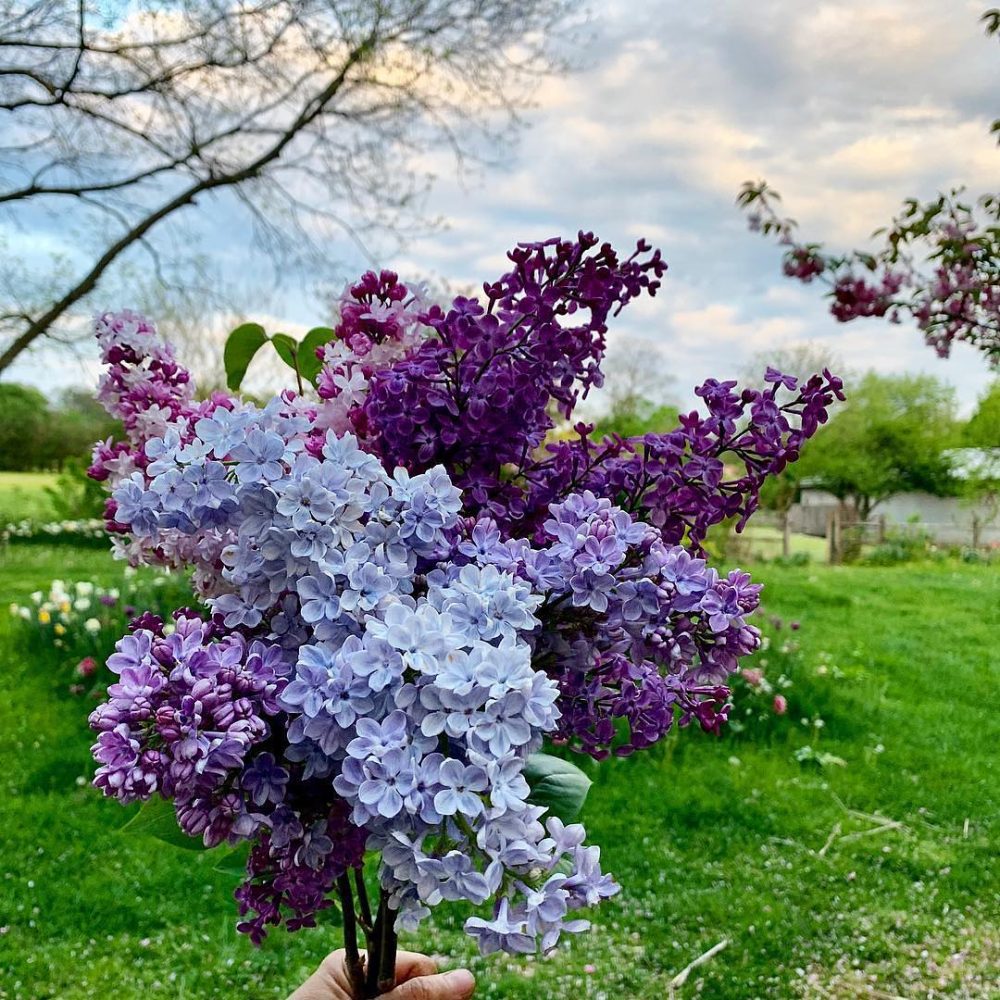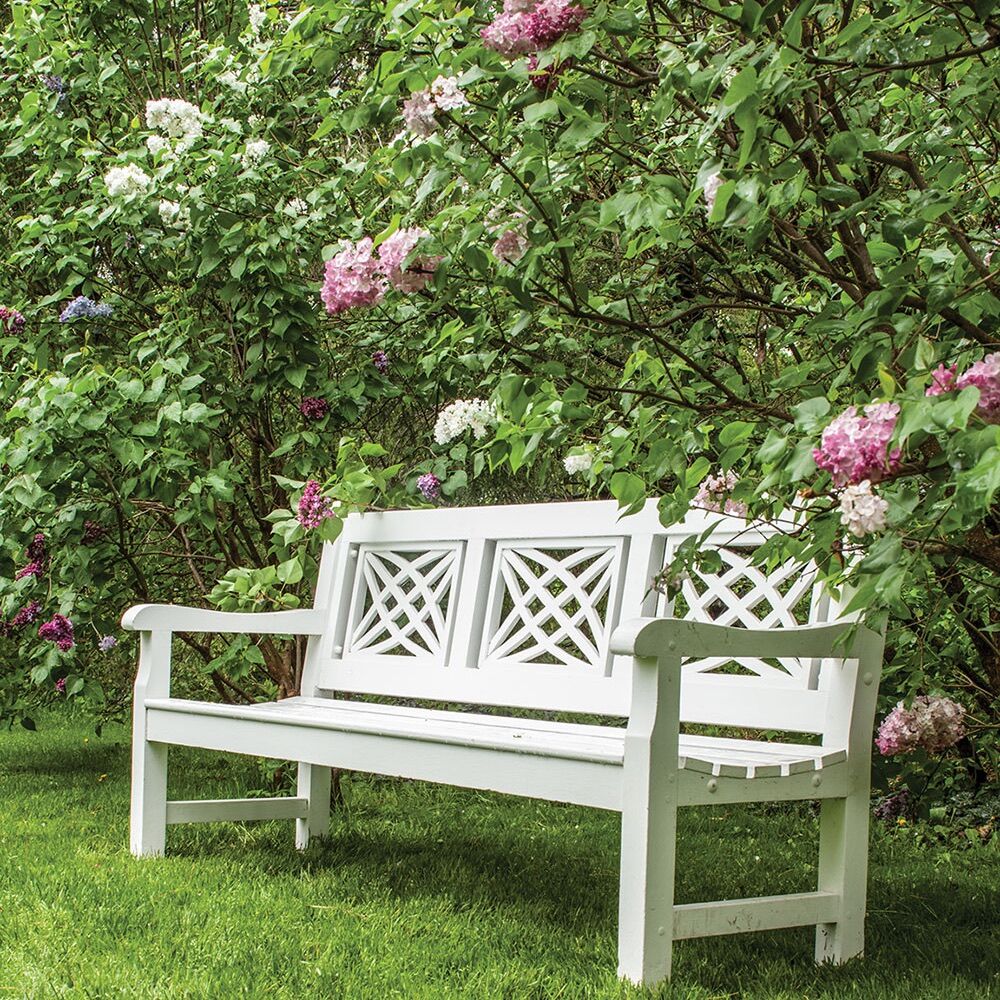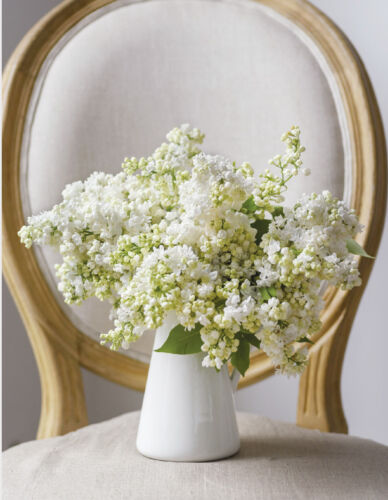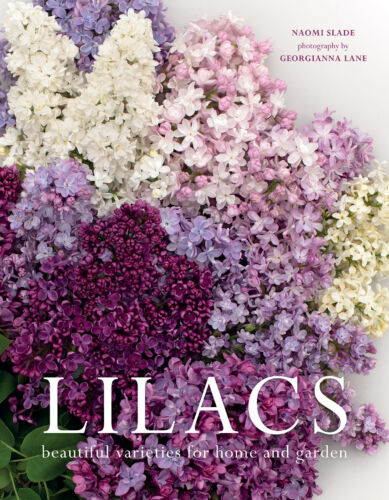1 | CLIMATE FOR LILACS
Most lilac varieties including the Common or French Lilac (Syringa vulgaris) prefer cool climates (zones 3–7), though some tolerate warmer locales. Cold winters trigger a period of dormancy, which they need to bloom. The timing depends on variety and location, but generally, lilac bushes bloom in the spring and only for two weeks.
2 | SUN, SOIL AND FERTILIZER
Lilac bushes are one of Arkansas-based landscape and garden designer P. Allen Smith’s 15 favorite fragrant plants for the garden. “Lilacs bloom best when planted in full sun and well-drained, alkaline soil,” he told Flower. “Plants should be fertilized with a general fertilizer in early spring and then again after the bloom cycle. To encourage blooms, substitute the general fertilizer with super phosphate, or a fertilizer high in phosphorus, for your early spring feeding.”

Several varieties of lilacs, including ‘Wedgwood Blue’ and ‘Belle de Moscou’ (with white and pink blooms), at the Farm at Oxford in Chester County, Pennsylvania. Photo courtesy of Mara Tyler
Pennsylvania flower farmer Mara Tyler of the Farm at Oxford also shared her lilac-growing tips, starting with full sun. “Don’t overfeed the lilac,” she said, “but we do give it a dose of compost annually and also a 3-5-4 organic local fertilizer annually. Since we are looking for blooms from our lilacs, we want to encourage blooms versus leafy growth over time. Also, once we plant small lilac babies, it can be 3–4 years before we are really able to harvest off a bush. They are slower growers the first few years but seem to really leap around year 4–5 in growth.”
When it comes to the time of year for planting lilac bushes, Tyler said, “We plant in the spring or fall, whenever we have the time.” However the time you plant does affect care. “As with any plant, if you plant in spring, make sure to keep the plant well watered through the heat of summer. In fall the plants usually get runoff from snow or winter rains and settle in well.”
3 | PRUNING LILACS
Lilac bushes set buds on old wood, so prune and shape them right after they finish blooming. Otherwise, said Tyler, you risk cutting off next year’s flowers.

Lilacs drape over a bench in the apple orchard of a historic estate in Pittsford, New York, designed by American landscape architect Fletcher Steele. Photo by Mick Hales
4 | VARIETIES OF LILAC BUSHES
Lilac flowers may be single or double, the leaves solid green or variegated, and the plants dwarf or standard. Lilac flower colors may be white, violet, pink, blue, and lilac (of course) to red-purple, dark purple, and even a yellow variety known as “Primrose.” One of the most fantastic lilac varieties planted on Mackinac Island in recent decades, known as “Sensation,” features picotee flowers with white edges on red-purple. While there’s a whole wide world of lilac varieties to embrace, here are a few options to consider if you have specific requirements.
- Warmer climates (zone 8): Plant ‘Miss Kim’ or ‘Blue Skies.’ Both available from Monrovia.
- Double flowers: ‘Scentara Double Blue’ has double, blue-toned purple flowers. Available from Proven Winners.
- Early blooms: Consider ‘Excel,” which puts on its big show between February and March. Sold by Fox Hill Lilac Nursery.
- Repeat blooms: Opt for ‘Josee’ with its long, lavender-pink panicles that can bloom until frost under the right conditions. Available from Spring Hill Nursery.
- White flowers: Double-flowered ‘Madame Lemoine’ is one of the most common whites. Available from Nature Hills. In warm climates go for ‘Angel White.’ Available from Monrovia.
- Pink flowers: ‘Miss Canada’ puts on a late show of reddish buds that open to rosy pink blossoms. Available from Monrovia.
- Yellow flowering lilac: ‘Primrose’ starts with showy yellow buds and has creamy white to pale yellow flowers. Sold by Spring Hill Nursery.
- Picotee flowered lilac: ‘Sensation’ mentioned above has clusters of white edged, reddish purple flowers. Available from Nature Hills.
5 | LILAC ORIGINS
Lilac bushes are not native to North America. The Common Lilac originated in Eastern Europe in the mountains of Bulgaria, Croatia, Slovakia, the Czech Republic, Hungary, and Romania. For centuries, the Turks cultivated the species. Then, in the 1500s, lilac bushes arrived in Vienna and Paris. The French developed so many varieties that Common Lilac is often called French hybrid or simply French Lilac. Finally, these European specimens made the journey to the New World, and lilac bushes graced the gardens of George Washington and Thomas Jefferson.

 Several varieties of lilacs, including ‘Wedgwood Blue’ and ‘Belle de Moscou’ (with white and pink blooms), at the Farm at Oxford in Chester County, Pennsylvania. Photo courtesy of Mara Tyler
Several varieties of lilacs, including ‘Wedgwood Blue’ and ‘Belle de Moscou’ (with white and pink blooms), at the Farm at Oxford in Chester County, Pennsylvania. Photo courtesy of Mara Tyler


